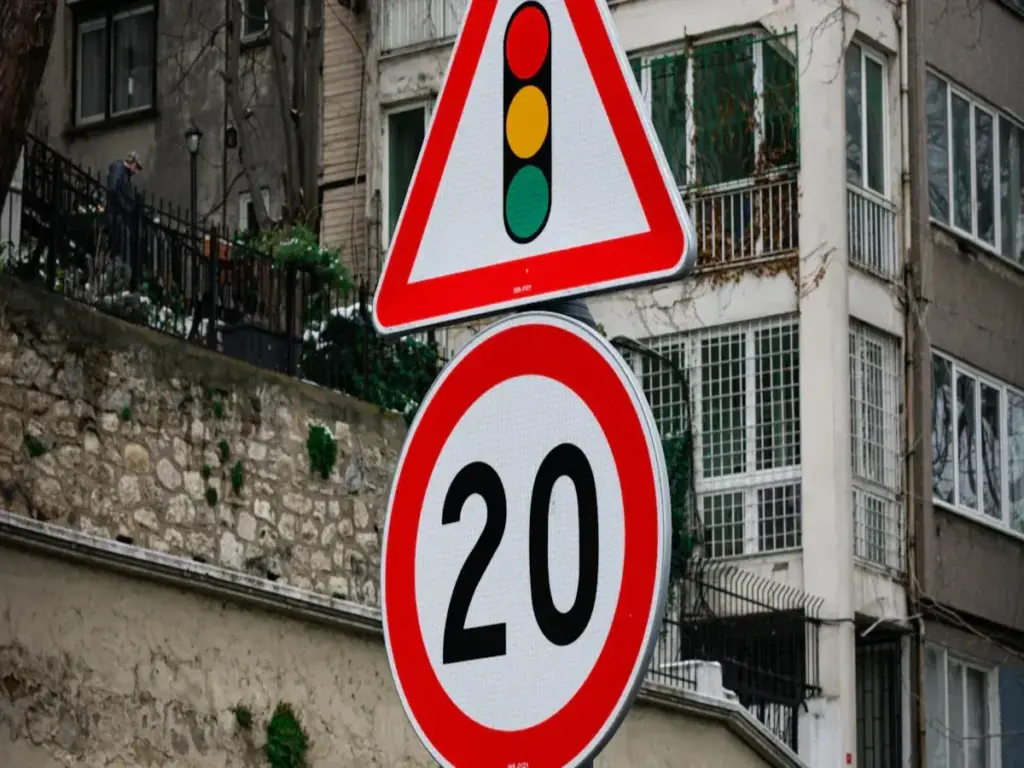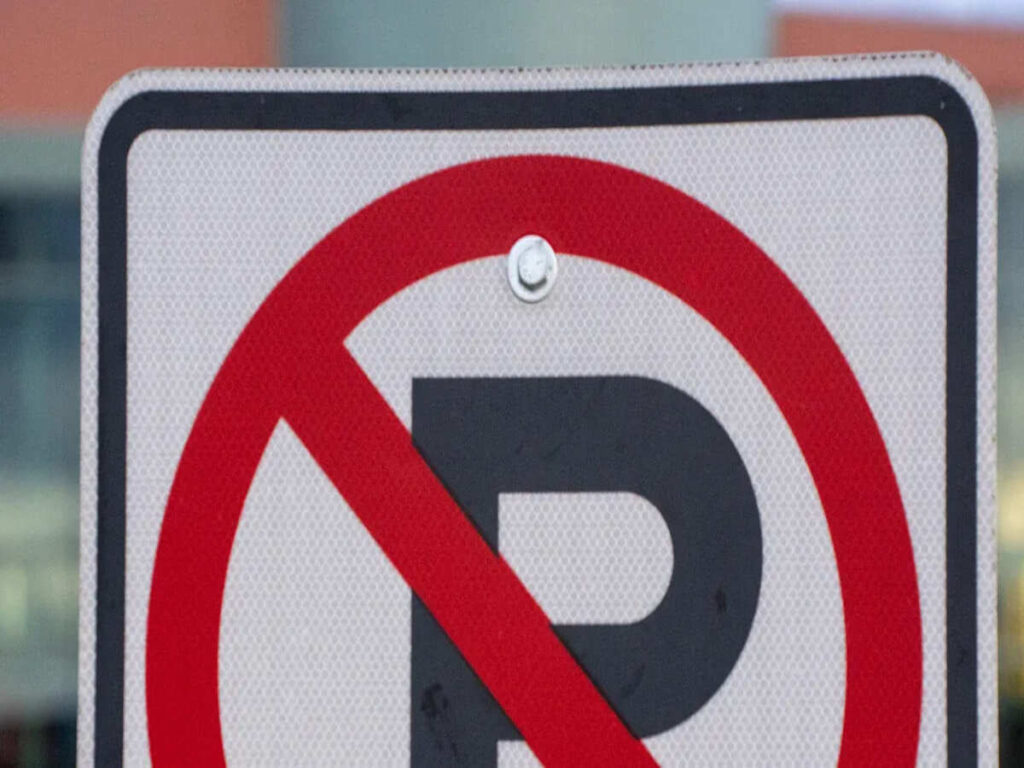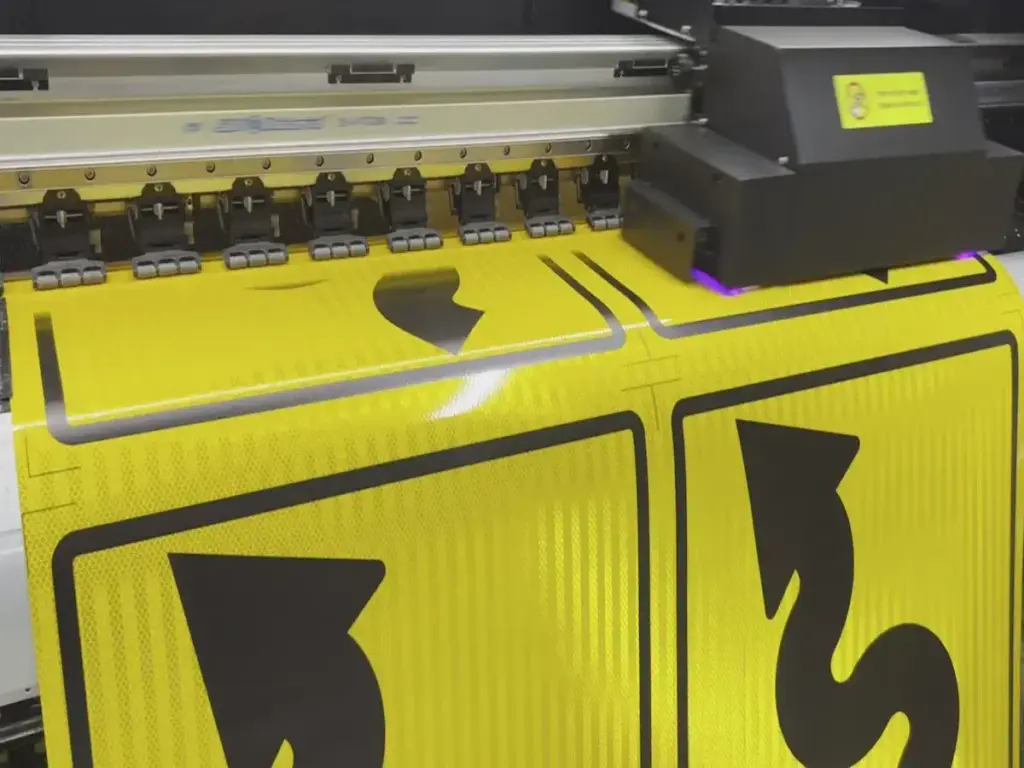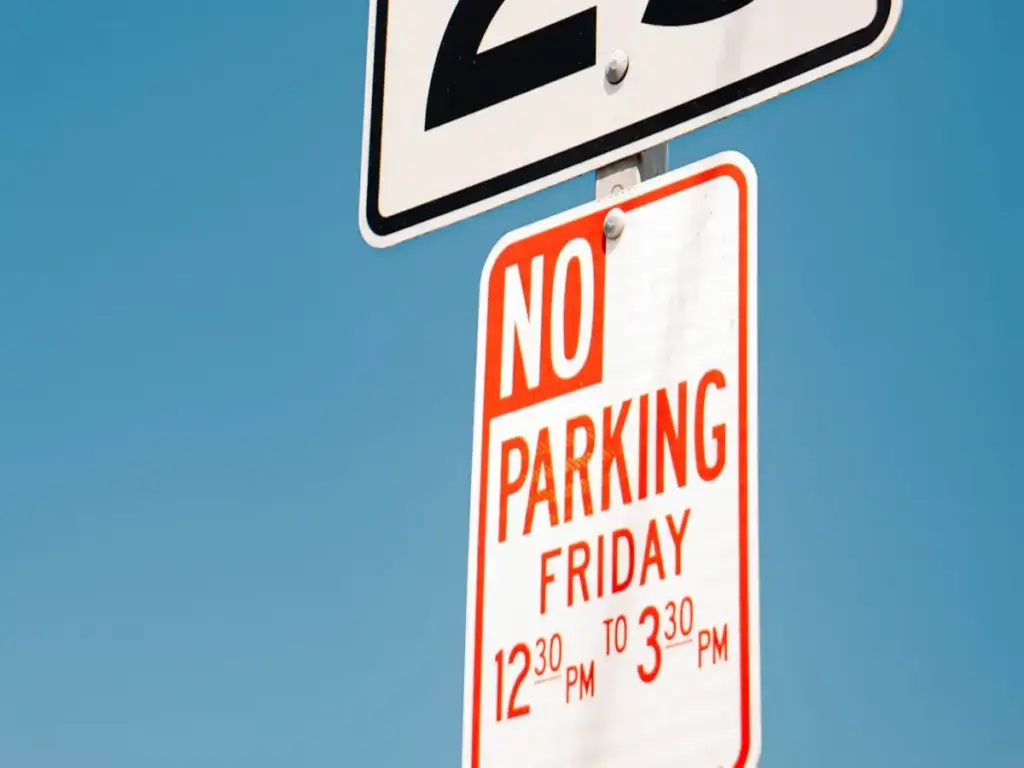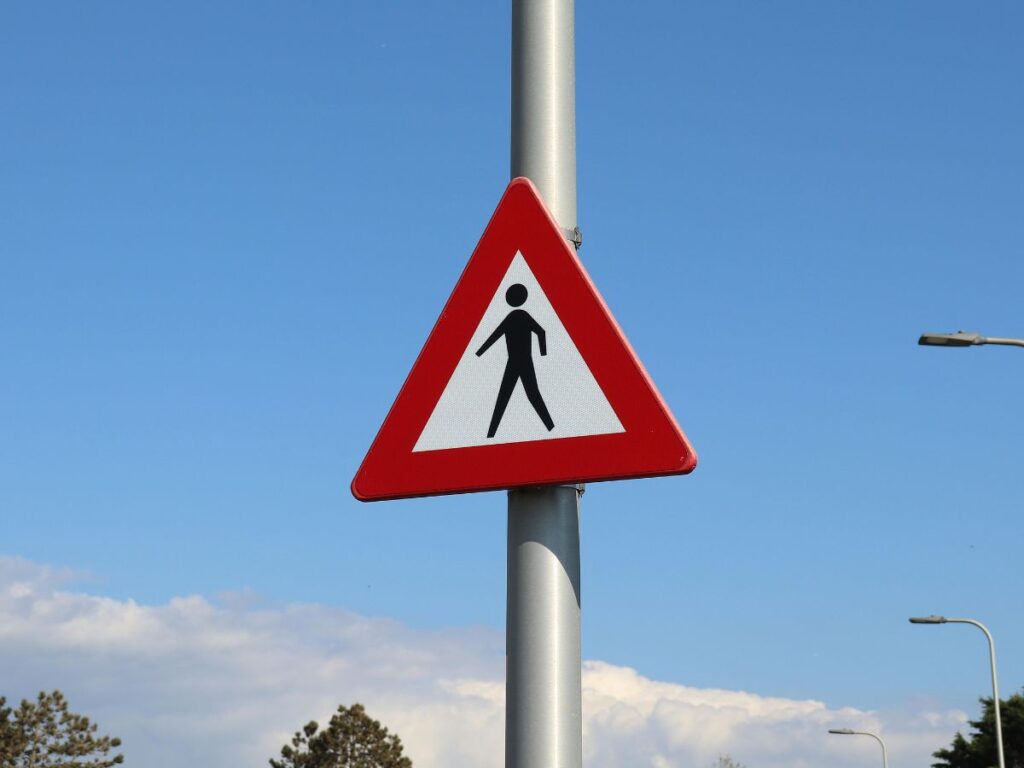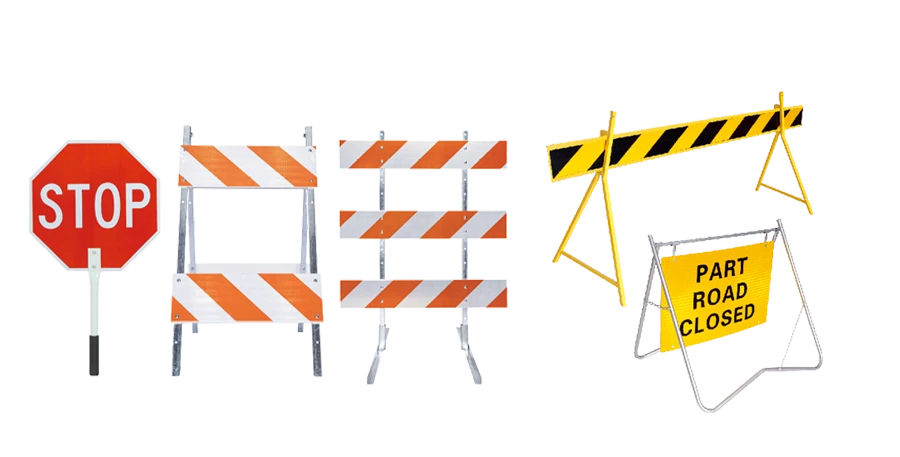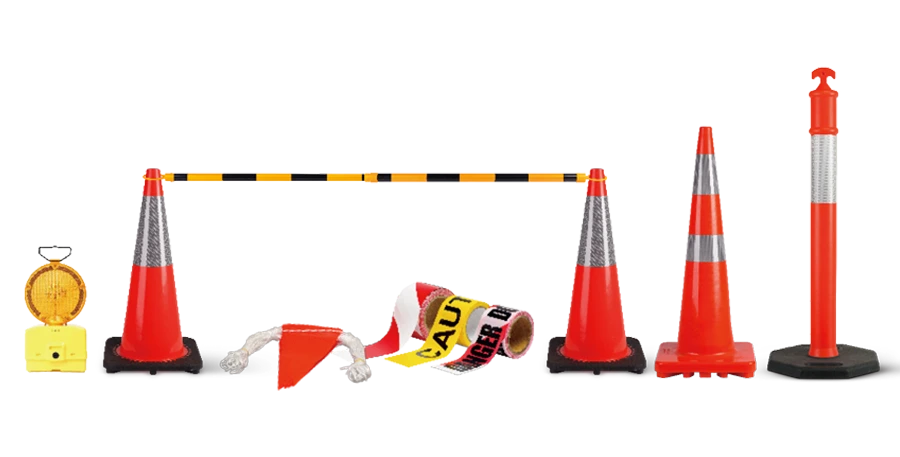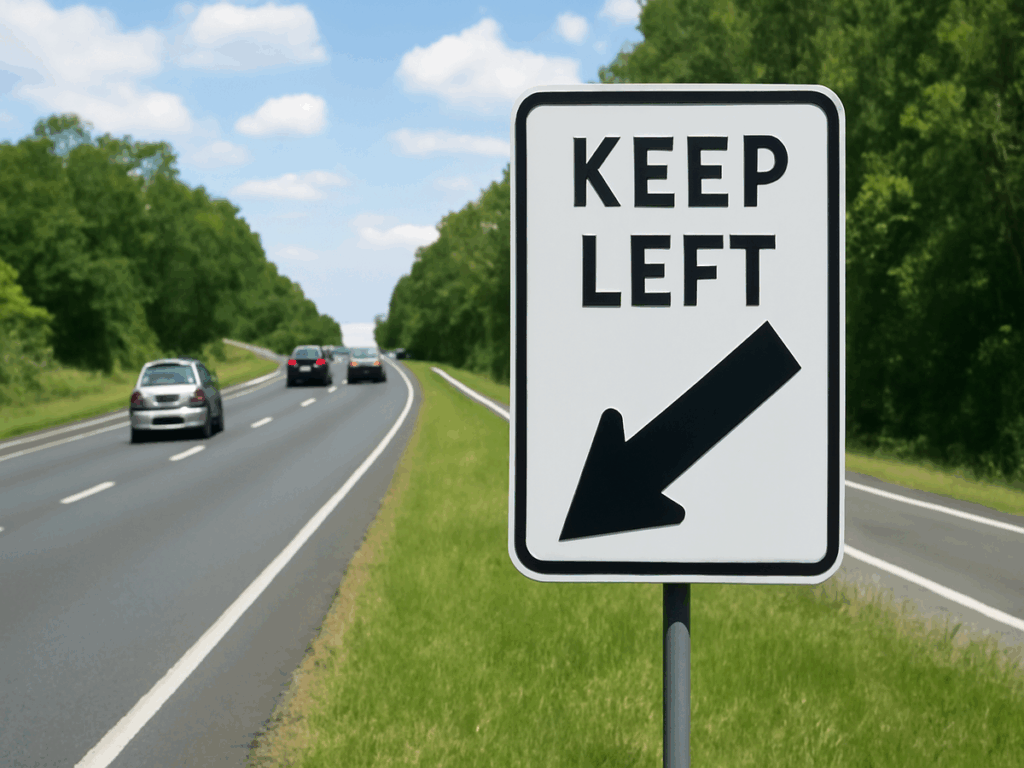
Wenn Sie in Australien fahren, Halten Sie die linken Zeichen nicht nur Vorschläge - sie sind Teil des Gesetzes. Sie werden oft sehen, wie sie Mediane platziert haben, Verkehrsinseln, oder Straßenverstopfungen. Diese Zeichen helfen zu verhindern und halten den Verkehr reibungslos fließen. Als Fahrer, Sie müssen links bleiben, es sei denn, Sie überholen.
Halten Sie die richtigen Zeichen, auf der anderen Seite, werden selten und nur in besonderen Fällen verwendet - Typen an bestimmten Straßenblöcken oder dort, wo Verkehrsmuster es erfordern. Das Ignorieren eines der Schilder kann zu Geldstrafen führen und andere unterwegs gefährden.
Bei OPTRAFFIC, Wir liefern vollständig konforme, halten Sie links und halten nach rechts Verkehrszeichen das entspricht den australischen Standards, Auftragnehmer helfen, Räte, und Exporteure halten Straßen in allen Umgebungen sicher und legal.
Key Takeaways
- Halten Sie die linken Schilder auf, den Fahrern zu sagen, sie sollen links von den Medianen gehen, Inseln, oder Dinge auf der Straße. Auf diesen Zeichen muss in Australien Rechtsrecht folgen.
- Legen Sie die linken Schilder nur an, wo die Fahrer eine Seite auswählen müssen. Dies ist bei Medianen oder Splitterinseln. Stellen Sie sicher, dass Schilder für die Sicherheit leicht zu sehen sind und leuchten..
- Die Fahrer müssen links bleiben, es sei denn, sie überholen sich, rechts abbiegen, oder Dinge vermeiden. Sie müssen auch im starken Verkehr links bleiben. Einige Staaten haben zusätzliche Regeln für mehrspurige Straßen.
- Wenn Sie ignorieren, halten Sie links oder behalten Sie die rechten Zeichen aufbewahren, Sie können eine Geldstrafe bekommen. Sie können auch Demerit -Punkte erhalten und eine höhere Chance auf einen Absturz haben. Folgen Sie immer den Schildern und gehen Sie zurück zur linken Spur, wenn es sicher ist.
- Straßendesigner dürfen keine Schilder an den falschen Ort stellen. Sie sollten sich nicht mit Chevrons mischen, um die linken Schilder zu behalten. Dies hilft den Fahrern zu wissen, was sie tun sollen, und bewahrt die Straßen sicher.
Zweck und Rechtsstatus
Regulatorische Rolle
Sie sehen die linken Zeichen und behalten die rechten Zeichen als Teil der offiziellen Straßenregeln in Australien. Diese Zeichen sind nicht nur Vorschläge. Sie sind regulatorische Zeichen, Das heißt, Sie müssen sie gesetzlich befolgen. Der Australischer Standard als 1742.2 Abschnitt 6.4 Definiert das Keep Left -Zeichen (R2-3(L)) als vertikales Rechteck mit einem schwarzen Pfeil und den Wörtern "links bleiben". Dieses Schild zeigt, dass Sie auf der linken Seite eines Hindernisses oder eines Geräts vorbeikommen müssen. Sie finden diese Zeichen bei Medianen, bemalten Inseln, und physische Barrieren. Das Gesetz verlangt, dass Sie diese Zeichen befolgen, um den Verkehr sicher und reibungslos zu halten.
Notiz: Das Reflexionsvermögen dieser Verkehrszeichen muss sich als/nzs erfüllen 1906.1 Klasse 1 oder 1W -Standards. Dies hilft Ihnen, sie klar zu sehen, sogar nachts oder bei schlechtem Wetter.
Fahrspurdisziplin und Sicherheit
Wenn Sie folgen, halten Sie die linken Zeichen, Sie helfen bei der Aufrechterhaltung der Fahrspurdisziplin. Dies ist wichtig für Verkehrssysteme wie die in Australien. Sie müssen nach links bleiben, wenn Sie nicht überholen, wenn Sie nicht überholt werden. Diese Praxis unterstützt das Fahren auf der linken Seite und hilft allen, den Straßenregeln zu folgen. So verbessern diese Zeichen die Sicherheit und Ordnung:
- Sie bleiben auf der linken Spur, es sei denn übertreffen, Dies verschmilzt glatt und verringert plötzliche Veränderungen der Fahrspur.
- Diese Angewohnheit führt zu sichereren und effizienteren Verkehrsfluss.
- Wenn Sie früh signalisieren, bevor Sie die Fahrspuren wechseln, Sie geben anderen Fahrern Zeit zum Reagieren.
- Wenn Sie Ihre Spiegel überprüfen, bevor Sie die Fahrspuren bewegt.
Sie spielen eine Schlüsselrolle bei der Sicherheit der Straßen, indem Sie diesen einfachen Regeln befolgen. Die Schilder führen Sie und erinnern Sie an Ihre Verantwortlichkeiten unter den australischen Straßenregeln.
Wo können Sie die linken Zeichen verwenden
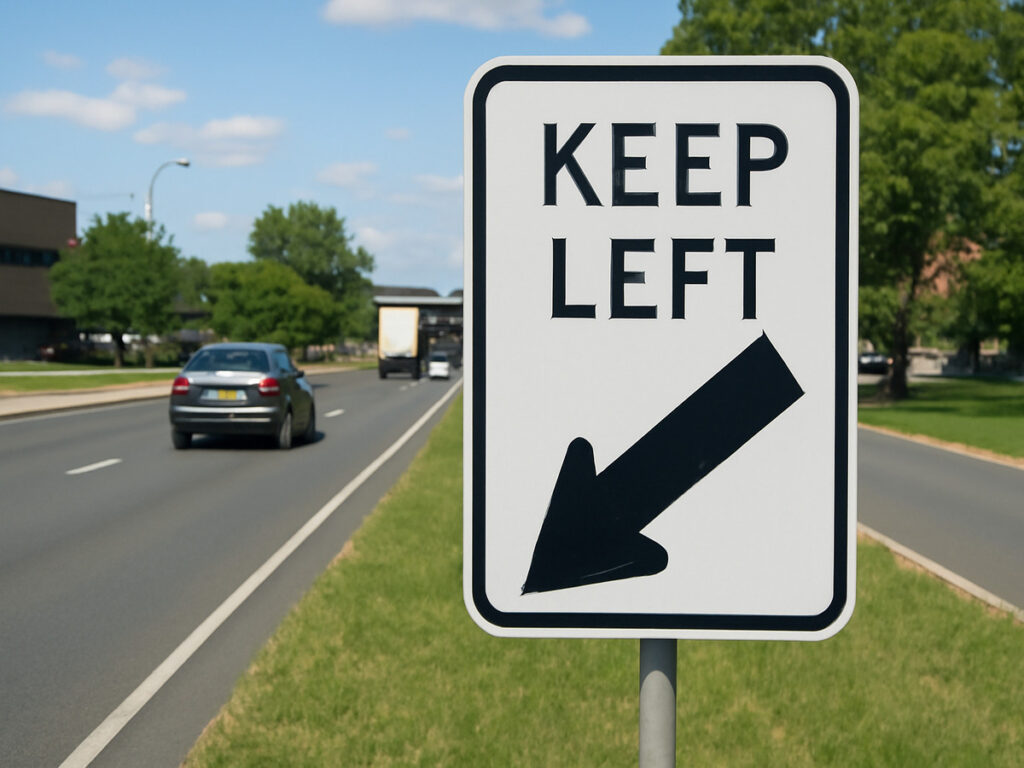
Obligatorische Orte
Halten Sie die linken Schilder an bestimmten Stellen auf der Straße. Diese Orte werden aus Sicherheitsgründen ausgewählt und das Gesetz in Australien befolgen. Die Zeichen helfen Ihnen dabei, sich um Mediane zu bewegen, bemalten Inseln, und Dinge, die die Straße blockieren. Sie werden sie sehen, wo die Straßen spalten, Zu Beginn der Fußgängerinseln, und auf zentralen Inseln an Kreuzungen. Das Gesetz besagt.
Sie finden diese Schilder auch an der Vorderseite der Splitterinseln und hinter den Bordsteinerweiterungen an Ampeln. Legen Sie kein linkes Schild auf der linken Schulter oder am Rand einer zentralen Insel ohne einen klaren Weg ein oder draußen. Das Schild sollte nur verwendet werden, wenn Sie eine Richtung auswählen müssen, nicht nur den Rand einer Straße markieren. Wenn Sie an der falschen Stelle ein Linksschild stellen.
Tipp: Überprüfen Sie immer, ob es etwas Reales gibt, Wie eine gemalten oder gebaute Funktion, das spaltet den Verkehr auf. Verwenden Sie nur ein Keep Left -Zeichen, wenn dies wahr ist.
Platzierung und Sichtbarkeit
Wenn Sie an der richtigen Stelle linke Schilder stellen, können Sie sie sehen und ihnen folgen. In Städten, Das Zeichen sollte sein 1 Zu 3 Meter vom Beginn der Insel. Legen Sie das Verkehrsschild in die Mitte auf einen Poller oder einen dünnen Pfosten. Auf Landstraßen, Besonders schnelle, Das Schild sollte wieder aufgestellt werden auf 5 Meter. Stellen Sie sicher, dass das Schild so wie Autos vorhanden ist.
An Kreuzungen, Halten Sie die linken Zeichen oft auf Autos, die hereinkommen. Legen Sie das Schild vor der Splitterinsel oder direkt hinter der Bordsteinerweiterung. Stellen Sie sicher, dass das Schild Ihre Sicht auf andere Autos oder Ampeln nicht blockiert. Das Straßenschild sollte hoch genug sein - dazwischen 1.5 Und 2.2 Meter über dem Boden in Städten, und bis zu 2.2 Meter im Land. Dies hilft Ihnen, das Schild über geparkte Autos oder Büsche zu sehen.
Halten Sie die linken Schilder ein Gute reflektierende Materialien. In Australien, Die Regeln sagen, dass Sie Klasse 1W benötigen, Klasse 400, oder Diamant -Grade -Blatt. Diese Materialien springen zurück, damit Sie das Schild nachts oder bei schlechtem Wetter sehen können. Auf schnellen Straßen oder an dunklen Orten, Sie könnten zusätzliche Dinge sehen wie LED -Leuchten oder Solarblitzlichter. Diese helfen Ihnen, das Schild im Regen zu bemerken, Nebel, oder nachts.
Sie müssen auch die Schilder sauber und in gutem Zustand halten. Räte überprüfen mindestens zweimal im Jahr Schilder. Sie ersetzen oder reinigen alle Verblassen, gebrochen, oder von Pflanzen versteckt. Einige Schilder verwenden spezielle Beschichtungen, um Sonnen- und Nebelschäden zu stoppen, Sie bleiben also länger klar.
Gesetzliche Anforderungen und Ausnahmen
Staats- und Territoriumsunterschiede
Sie müssen folgen, um die linken Zeichen in ganz Australien zu halten, Aber jedes Staat und jeder Territorium haben seine eigenen Details in den Straßenregeln. Der nationale Standard, ALS 1742.2, Legt die Hauptregeln für diese Zeichen fest. Jeder Staat verwendet diesen Standard, Einige fügen jedoch zusätzliche Regeln hinzu oder ändern, wie Sie an bestimmten Orten handeln müssen.
Hier ist eine Tabelle, die Ihnen hilft, die Hauptunterschiede zu sehen:
| Staat/Territorium | Geschwindigkeitsschwelle für “Links bleiben, wenn man nicht überholt” | Mehrspur-Straßenregel | Einzigartige Notizen |
|---|---|---|---|
| NSW | Über 80 km/h | Ja | Gilt auf allen mehrspurigen Straßen |
| Vic | Über 80 km/h | Ja | Strenge Durchsetzung auf Autobahnen |
| Qld | Über 80 km/h | Ja | Gilt für alle geteilten Straßen |
| Von | Über 90 km/h | Ja | Gilt auf Autobahnen |
| An | Über 80 km/h | Ja | Beinhaltet arterielle Straßen |
| Das | Über 80 km/h | Ja | Gilt für alle Autobahnen |
| Nt | Über 80 km/h | Ja | Einige ländliche Straßen waren ausgeschlossen |
| AKT | Über 80 km/h | Ja | Gilt auf Parkways |
Sie müssen leiden. Auf mehrspurigen Straßen, Sie müssen auf der linken Spur bleiben, es sei denn, Sie müssen ein anderes Fahrzeug fahren. Einige Staaten, wie Victoria Und New South Wales, Überprüfen Sie diese Regel mit Kameras und Polizeipatrouillen. Wenn Sie diese Regel brechen, Sie können eine Geldstrafe bekommen oder Demerit -Punkte verlieren.
Notiz: Überprüfen Sie immer Ihre örtlichen Straßenregeln, bevor Sie in einem neuen Staat fahren. Einige Bereiche haben zusätzliche Anzeichen oder lokale Regeln, denen Sie befolgen müssen.
Ausnahmen von der Regel
Sie müssen nicht immer links bleiben, wenn Sie nicht überholen, wenn Sie übertreffen. Das Gesetz gibt Ihnen einige klare Ausnahmen. Sie können in diesen Fällen die rechte Spur verwenden oder rechts nachgeben:
- Überholung: Sie können sich rechts bewegen, um ein langsameres Fahrzeug zu bestehen. Nach Überholung, Sie müssen auf die linke Spur zurückkehren, sobald es sicher ist.
- Rechts abbiegen oder eine Kehrtwende machen: Wenn Sie planen, rechts abzubiegen oder eine Kehrtwende zu machen, Sie können die rechte Spur verwenden oder sich kurz vor der Kurve bewegen.
- Stauung: Im starken Verkehr, Sie können jede Fahrspur verwenden. Die Regel gilt nicht, wenn sich alle Fahrspuren langsam bewegen.
- Ein Behinderung vermeiden: Wenn es eine Gefahr gibt, wie ein kaputtes Auto oder Straßenarbeiten, Sie können sich rechts bewegen, um es zu vermeiden.
- Spezielle Fahrzeuge: Einsatzfahrzeuge, Busse, und einige Servicefahrzeuge haben möglicherweise zusätzliche Rechte, die richtige Spur zu nutzen.
Hier ist eine kurze Checkliste für Sie:
- ✅ ein langsameres Auto überholen? Sie können die richtige Spur verwenden.
- ✅ rechts abbiegen oder eine Kehrtwende machen? Sie können die richtige Spur verwenden.
- ✅ im Verkehr festgefahren? Sie können jede Fahrspur verwenden.
- ✅ Voraussetzung voraus? Sie können sich rechts bewegen, um es zu vermeiden.
- ❌ Kein Grund? Sie müssen links bleiben, wenn Sie nicht übertreffen.
Tipp: Kehren Sie immer auf die linke Fahrspur zurück, nachdem Sie das Überholen abgeschlossen haben oder ein Obstruktion vorbeifahren. Dies hält den Verkehr fließt und hilft jedem, sicher zu bleiben.
Sie müssen sich daran erinnern, dass die linken Anzeichen da sind, um Sie zu führen. Sie helfen Ihnen dabei, die Straßenregeln zu befolgen und auf belebten Straßen zu bestellen. Wenn Sie diese Zeichen ohne gültigen Grund ignorieren, Sie riskieren eine Geldstrafe und setzen andere in Gefahr.
Falsche Verwendung und Missbrauchrisiken
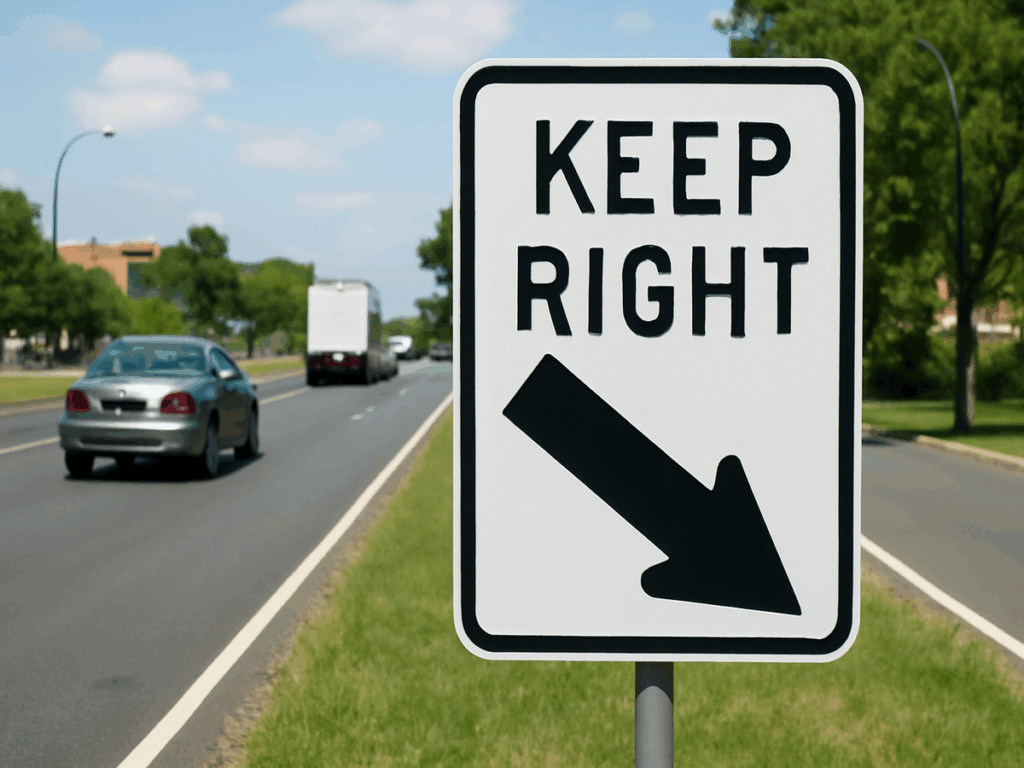
Häufige Fehler
Sie könnten denken, Aber viele Straßendesigner machen Fehler, die Verwirrung oder sogar Unfälle verursachen können. Sie sollten niemals ein Keep links -Schild auf der linken Schulter einer Straße installieren, am Rand einer zentralen Insel ohne einen klaren Eintritt oder Ausgang, oder auf breiten lackierten Bereichen, die kein echtes Hindernis haben. Das Zeichen muss sich immer auf eine klare Richtungswahl beziehen, Nicht nur den Straßenkante markieren.
Ein häufiger Fehler besteht darin. Erinnern, Links bleiben ist eine Regel, die Sie befolgen müssen, Während Chevrons nur Ratschläge für Biegungen oder Zusammenschlüsse geben. Wenn Sie diese Zeichen tauschen, Sie riskieren, ein Verkehrssicherheitsaudit zu bestehen oder Ihr Projekt von den Behörden abzulehnen.
Sie können diese Probleme vermeiden, indem Sie Folgendes überprüfen:
- Nur zu Beginn der Mediane links bleiben, bemalten Inseln, oder physische Hindernisse.
- Verwenden Sie niemals links, wo es keine Richtungsentscheidung benötigt.
- Verwenden Sie nicht anstelle von Chevron.
Tipp: Überprüfen Sie immer den australischen Standard als 1742.2 Vor der Installation eines regulatorischen Zeichens.
Einige andere häufige Fehler sind:
- Verkehrszeichen auf der falschen Straßenseite platzieren, Das macht es den Fahrern schwer zu verstehen.
- Mit unklaren oder inkonsistenten Zeichen, die nicht mit dem Straßenlayout übereinstimmen.
- Die Fahrer nicht über die Bedeutung jedes Zeichens unterrichten.
Visuelle Verwirrung
In seltenen Fällen können Sie die richtigen Zeichen behalten sehen, wie bei medianen Fahrstraßen nur bei Bussen. Diese Zeichen sagen Ihnen, dass Sie das Recht eines bestimmten Hindernals weitergeben sollen. Wenn Sie keine klaren unterstützenden Zeichen sehen, Sie könnten ein haltes rechtes Zeichen falsch verstanden, wenn Sie links bleiben, vor allem bei schlechter Beleuchtung oder in einem seltsamen Winkel.
Um Ihnen zu helfen, Verwirrung zu vermeiden, Designer verwenden:
| Lösung | Wie es dir hilft |
|---|---|
| Verbesserte Beleuchtung oder Reflektoren | Erleichtert die Schilder nachts leichter zu sehen |
| Klare Pfeilschilder | Zeigt Ihnen die richtige Richtung |
| Unterstützende Zeichen (Z.B., “Außer Bussen”) | Erklärt, wer dem Zeichen folgen muss |
Wenn Sie ein richtiges richtiges Zeichen sehen, Überprüfen Sie zusätzliche Informationen in der Nähe. Folgen Sie immer den Pfeilen und zusätzlichen Anweisungen. Dies hilft Ihnen, sicher zu bleiben und Fehler auf der Straße zu vermeiden.
Notiz: Gute Platzierung und klares Design schützen Sie und alle anderen unterwegs. Suchen Sie immer nach klar, Gut beleuchtete Zeichen und folgen Sie ihren Anweisungen.
Strafen und Konformität
Geldstrafen und rechtliche Folgen
Sie stehen vor strengen Strafen, wenn Sie in Australien ignorieren oder die rechten Zeichen aufbewahren. Diese Zeichen sind nicht optional. Sie sind regulatorisch, Das heißt, Sie müssen ihnen gesetzlich folgen. Polizei- und Straßenbehörden prüfen nach Einhaltung, vor allem bei Medianen, Inseln, und Kreuzungen.
Wenn Sie diesen Zeichen nicht befolgen, Sie können erhalten:
- Bußgelder vor Ort: Die meisten Staaten geben Geldstrafen zwischen $100 Und $300 um bei Bedarf nicht links zu bleiben.
- Demerit -Punkte: Sie können verlieren 2 oder 3 Punkte aus Ihrer Lizenz für jede Straftat.
- Gerichtsverfahren: Wiederholte Straftaten oder gefährliches Fahren können zum Gericht führen, Höhere Geldstrafen, oder sogar Lizenzaufsetzung.
Hier ist ein kurzer Tisch, um mögliche Strafen zu zeigen:
| Staat/Territorium | Typisch gut | Demerit -Punkte |
|---|---|---|
| NSW | $272 | 2 |
| Vic | $185 | 2 |
| Qld | $133 | 2 |
| Von | $100 | 2 |
| An | $201 | 2 |
Notiz: Strafen können zunehmen, wenn Sie einen Absturz verursachen oder Schilder in Schulgebieten oder Straßenarbeiten ignorieren.
Praktische Compliance -Tipps
Sie können Geldstrafen vermeiden und alle sicher halten, indem Sie ein paar einfachen Schritten befolgen:
- Suchen Sie nach Zeichen: Überprüfen Sie immer, ob Sie links bleiben oder die rechten Schilder bei den Medianen behalten, bemalten Inseln, und Kreuzungen.
- Folgen Sie Pfeilen: Der Pfeil auf dem Schild zeigt Ihnen, welche Seite Sie passieren sollen. Raten Sie nicht.
- Kehre auf die linke Spur zurück: Nach Überholung oder Vermeidung eines Hindernisses, Gehen Sie zurück nach links, sobald es sicher ist.
- Tauschen Sie keine Schilder aus: Verwenden Sie niemals ein Keep Left -Zeichen, bei dem ein Chevron benötigt wird. Chevrons geben nur Ratschläge für Kurven oder Verschmelzungen.
- Überprüfen Sie die lokalen Regeln: Jeder Staat kann zusätzliche Regeln oder höhere Strafen haben. Lesen Sie Schilder und bleiben Sie wachsam.
🚦 Tipp: Wenn Sie Straßen entwerfen, immer folgen als 1742.2 Für die Platzierung der Zeichen und verwenden Sie reflektierende Materialien. Dies hilft den Fahrern, die Zeichen zu sehen und zu befolgen, Tag oder Nacht.
Sie spielen eine Schlüsselrolle in der Verkehrssicherheit. Durch Folgen dieser Tipps, Sie helfen bei der Verhinderung von Unfällen und vermeiden kostspielige Strafen.
Sie müssen bei den Medianen die rechte Anzeichen für die rechten Anzeichen verwenden, Inseln, und Dinge, die die Straße blockieren. Diese Zeichen müssen an den richtigen Ort gebracht werden und leicht zu sehen sein, Wie die australischen Standards sagen. Wenn Sie die Schilder an der richtigen Stelle legen, verhindern Sie, dass die Treiber sich vermischen, und hilft dabei, Wie Experten gefunden haben. Folgen Sie immer diesen Zeichen und suchen Sie nach Pfeilen, die Ihnen zeigen, wohin Sie gehen sollen.
- Achten Sie auf Arbeitszonenzeichen
- Führen Sie frühzeitig zusammen und folgen Sie den Pfeilen in Ihrer Fahrspur
- Designer müssen sicherstellen, dass Schilder leicht zu sehen sind, dass die Straße schwierig ist, Überprüfen Sie die lokalen Regeln oder fragen Sie einen Experten. Dies hilft Ihnen, sicher zu bleiben und keine Geldstrafe zu bekommen.
FAQ
Was bedeutet ein Keep Left -Zeichen für Sie als Fahrer??
Ein linkes Schild auf der Linken sagt, dass Sie auf der linken Seite einer Insel vorbeikommen sollen, mittlere, oder Hindernis. Sie müssen dieser Regel folgen. Das Schild hilft, den Verkehr sicher und ordentlich zu halten.
Wo müssen Sie niemals ein Keep Links -Schild installieren?
Sie dürfen kein linkes Schild auf der linken Schulter platzieren, am Rand einer zentralen Insel ohne Eintritt oder Ausgang, oder auf breiten lackierten Bereichen ohne wirkliche Obstruktion. Das Zeichen muss sich immer auf eine klare Richtungswahl beziehen.
Wie können Sie den Unterschied zwischen einem Keep links -Zeichen und einem Chevron -Zeichen erkennen??
Halten Sie die linken Anzeichen für Regeln, denen Sie befolgen müssen. Chevrons geben nur Ratschläge für Kurven oder Verschmelzungen. Verwenden Sie niemals ein Keep Left -Zeichen, bei dem ein Chevron benötigt wird.
Wann verwenden Sie in Australien ein richtiges Rechtsschild??
Sie verwenden nur ein Right -Schild, wenn Sie das Recht eines bestimmten Hindernals weitergeben müssen. Das ist selten. Sie sehen es oft auf medianen Fahrstraßen nur mit Bussen, mit zusätzlichen Anzeichen, um zu erklären, wer ihm folgen muss.
Was sollten Sie tun, wenn Sie nachts oder bei schlechtem Wetter ein links links oder das rechte Schild halten sehen?
Suchen Sie nach reflektierenden Materialien oder zusätzlichen Beleuchtung auf dem Schild. Diese Funktionen helfen Ihnen dabei, das Zeichen unter schlechten Bedingungen klar zu sehen. Folgen Sie immer dem Pfeil und zusätzlichen Anweisungen, um sicher zu bleiben.

